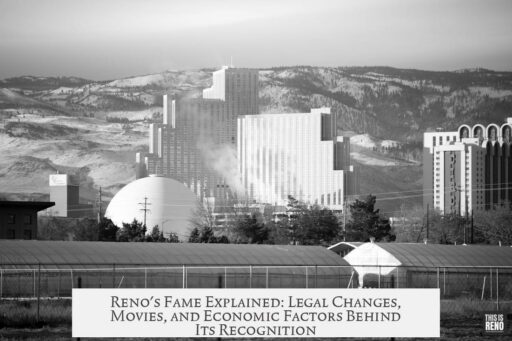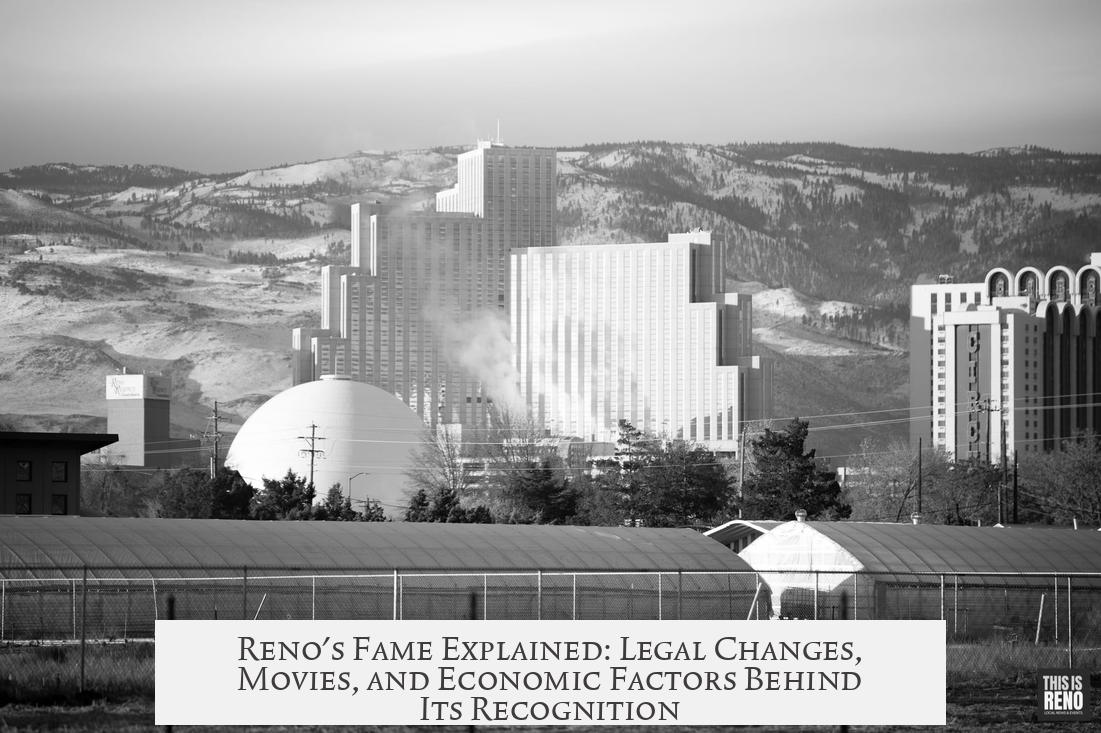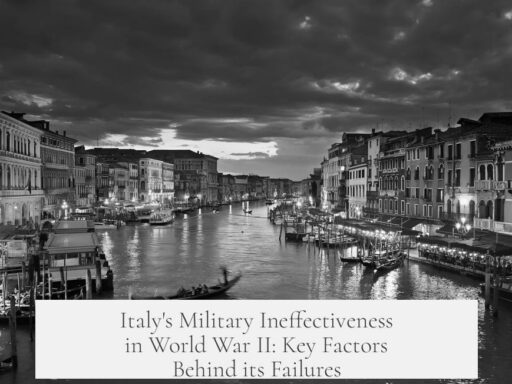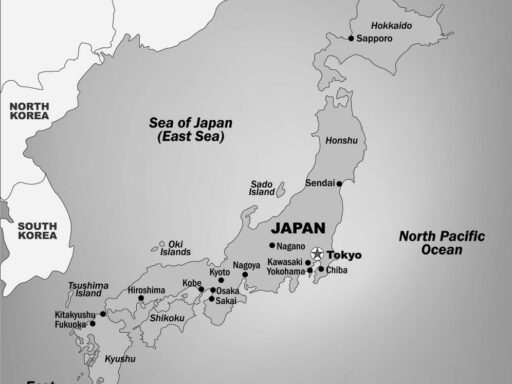Reno is well-known despite lacking distinctive natural or architectural landmarks because of its historical prominence, unique legislative environment, cultural representations, and economic strategies that attracted wealth and attention over time.
Initially, Reno’s fame stems from its status as Nevada’s largest community for over six decades. Although Nevada was admitted as a state in 1864 under unusual political conditions related to the Civil War, its population was small for a long time, only crossing the typical 100,000 mark by 1930. Reno served as the population and activity center in Nevada more than once, amid a shifting state demographic that saw various towns rise and fall in prominence. From Genoa in the early 1850s to Las Vegas overtaking Reno in the late 1950s, Reno was frequently the largest and busiest hub.
This role was supported by Reno’s central location along key transportation routes. The completion of the transcontinental railroad in 1869, with branch lines passing through Reno, and its placement on the Lincoln Highway during the 1920s positioned the city as a major transit point. Being a crossroads town increased its regional importance and visibility.
- Largest Nevada community for decades
- Key rail and highway connections
- Repeated shifts of population centers
Reno’s reputation also owes much to its flexible legal environment, specifically its liberalized divorce laws enacted during the Great Depression. The state made divorce faster and easier at a time when many states made it more difficult. Residents only needed a short residency period to obtain a no-contest divorce, which attracted many people seeking quick marital dissolutions and remarriages. This earned Reno the nickname “Divorce Capital” and attracted celebrities looking for expedited legal processes, boosting its national profile.
Adding to this was Reno’s role as a setting in film and media. Movies like “The Misfits” portrayed Reno as a place tied to rugged Americana and complicated personal lives. Such films portrayed Reno’s image as a gritty, somewhat sordid locale tied to divorce and quick marriages. These cultural portrayals reinforced Reno’s fame and kept it in public consciousness.
- Lenient divorce laws (short residency for no-contest divorces)
- Celebrity visits for marriages and divorces
- Media portrayals in films like “The Misfits”
Economic policies further enhanced Reno’s renown. Nevada’s absence of state income tax and relatively low other taxes attracted wealthy individuals and investors. The “One Sound State” movement promoted the state as a tax haven for billionaires and entrepreneurs. Many wealthy people chose to relocate to Nevada, often purchasing property near Reno. These relocations added prestige and continued visibility to the city.
By mid-20th century, although Las Vegas began to grow rapidly, Reno maintained its identity as Nevada’s largest community, centered around a historic downtown with casinos. Unlike Las Vegas, where the famous Strip was built outside the main part of town to avoid local regulation, Reno kept its gambling district integrated within the urban core. This distinction gave Reno a different, more traditional gambling town image rather than a tourist entertainment facade.
| Aspect | Reno | Las Vegas |
|---|---|---|
| Gambling location | Downtown, integrated with city | Strip, outside city limits |
| City reputation | Historic, authentic gambling town | Entertainment and tourism hub |
| Time of prominence | Mid-19th century to mid-20th century | Late 1950s onward |
In summary, Reno’s recognition comes from its historic role as Nevada’s population center and transportation hub, its pioneering and liberal divorce laws that attracted a celebrity clientele, portrayals in popular culture, and economic policies favoring wealth migration. Even though it does not boast unique physical landmarks, these social, legal, and economic factors give it a distinct place in American history.
- Reno was Nevada’s largest city for decades, central to state history.
- Easy divorce laws and quick marriages attracted celebrities and visitors.
- Movies and media reinforced Reno’s gritty, romanticized reputation.
- Nevada’s tax policies drew wealthy residents investing near Reno.
- The city’s integrated downtown gambling district contrasts with Las Vegas Strip.
Why is Reno so well-known, despite its lack of distinguishing features?
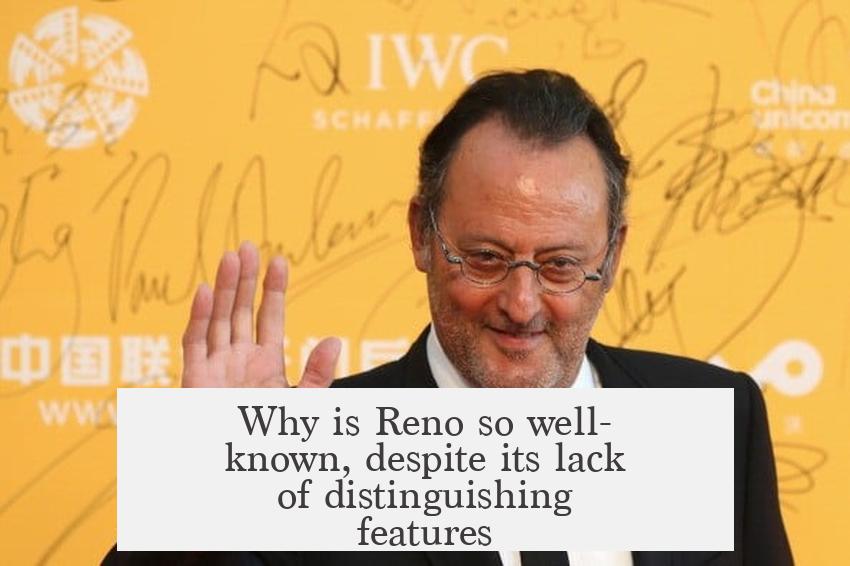
Reno is well-known because of its unique history, progressive laws, and role as Nevada’s cultural and economic hub long before Las Vegas stole the spotlight. While it lacks towering landmarks or a flashy image, Reno earned its fame through a mix of timing, legal innovation, and a pinch of celebrity gossip. Let’s unpack what makes this city a curious case in American popularity.
First, Reno’s history sets the stage. For about six decades, it was Nevada’s largest community—and that’s saying something when the entire state didn’t cross the 100,000 population mark until 1930. Nevada joined the Union in 1864, a peculiar moment during the Civil War, largely for political reasons. Reno grew steadily, benefiting from the moves of the state’s population center. In fact, Nevada’s largest city title sashayed from Genoa, Carson City, Virginia City, Reno, Goldfield, back to Reno, and finally to Las Vegas by the late 1950s.
Reno’s location on critical transportation routes amplified its importance. When the transcontinental railroad was completed in 1869, Reno became a key stop. Later, as a point on the Lincoln Highway in the 1920s, it steadily built a reputation as “where it was happening.” So, Reno’s fame might partly come from being in the right place at the right time.
The Reno “Reno-vation” Effect: Legal Innovation and Celebrity Magnet

One of the most fascinating reasons Reno became so famous involves its laws—especially those regarding divorce.
During the Great Depression, most states tightened restrictions on divorce, marriage, and gambling, trying to uphold traditional values. Nevada did the opposite. It eased divorce rules, drastically reducing the residency period needed for a no-contest divorce. Suddenly, Reno became the place for speedy splits and fresh starts.
This legal easiness wasn’t just a small-town tweak; it made Reno a destination for celebrities seeking quick divorces and marriages with minimal fuss. Imagine the Hollywood elite jetting in for a divorce and quick remarriage without waiting months or dealing with intrusive health checks. Headlines thrived on this gossip, cementing Reno’s edgy and somewhat sordid reputation.
Reno in the Movies: The Silver Screen’s Nod

Movies didn’t ignore Reno’s peculiar fame. The film The Misfits, starring Marilyn Monroe and Clark Gable—both iconic and in their final roles—portrayed classic Reno stereotypes. Monroe’s character sought a divorce there, while Gable played the worn-out cowboy, dealing with local mustang captures. This portrayal reinforced the city’s image as a gritty, emotional crossroads, adding fame layers that went beyond just local headlines.
Despite all this fame, Reno carried a reputation for being a little sordid. Some sources today might describe it as a town with a bit of a rough edge—a place where undercurrents of risk and human drama unfold.
The Economics of Fame: Taxes, Wealth, and the One Sound State Movement
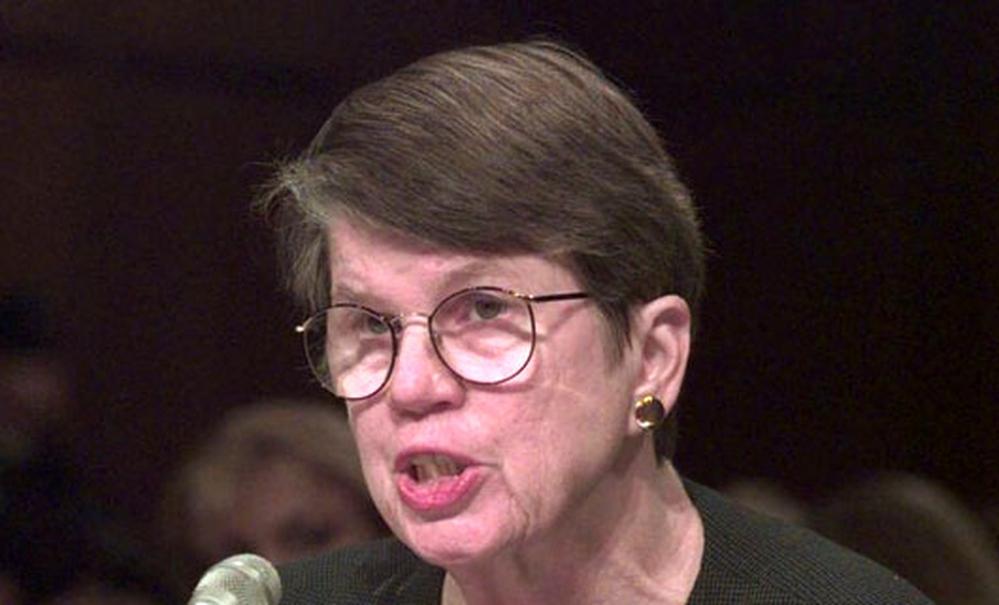
Another less obvious but potent factor in Reno’s notoriety came from Nevada’s tax policies. Nevada has no state income tax and taxes very little outside of tourists. This struck a chord with wealthy individuals seeking shelter from high-tax states.
The “One Sound State” movement actively promoted this advantage. It pitched Nevada as a tax haven where the rich could relocate and safeguard their wealth. Most of those wealthy movers invested in Reno or nearby areas. Their presence added an exclusive dimension to the city’s reputation, linking Reno not just to quick divorces but to serious money and investment.
How Does Reno Compare to Las Vegas?

Starting in the 1950s, Reno’s spotlight dimmed as Las Vegas rose. Las Vegas’ growth hinged on new factors like air conditioning and cheap electricity from the Hoover Dam. Las Vegas crafted a different personality—a glitzy facade centered around the Strip, which lies outside city limits. This strategic distancing meant the city’s fame became tied more to the Strip experience than the town itself.
In contrast, Reno kept its gambling scene and nightlife right in its historic downtown area, closely tied to the community. Visiting Reno meant experiencing the town itself, whereas visitors to Las Vegas mostly engaged with the Strip, a carefully controlled entertainment zone separate from daily city life.
This explains why Reno remains well-known despite lacking extravagant architecture or high-profile tourist attractions. Its fame is baked into its authentic local culture, its role in shaping social and economic trends, and its historic reputation as a place of second chances and high stakes.
What Can Today’s Visitors Expect from Reno?
- If you’re curious about American history, Reno tells a story of frontier resilience, population shifts, and social experimentation.
- For those interested in celebrity culture and quirky legal history, Reno’s divorce laws and quick marriages offer a fascinating backdrop.
- Players and gamblers find a nostalgic charm in downtown Reno’s historic casinos, a counterpart to Vegas’ massive Strip.
- Wealth seekers still note Nevada’s tax benefits, contributing quietly to Reno’s ongoing economic relevance.
So, why is Reno so well-known, despite its lack of distinguishing features? It’s the city’s history, laws, celebrity allure, and economic appeal that create a unique hum of fame. It encourages visitors to look past surface glitz and appreciate a town rich with stories, controversies, and resilience. Now, isn’t that a distinctive charm all its own?
